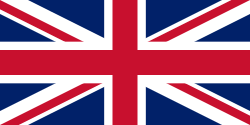Province of Lower Canada Province du Bas-Canada (French) | |||||||||||
|---|---|---|---|---|---|---|---|---|---|---|---|
| 1791–1841 | |||||||||||
| Anthem: "God Save the King/Queen" | |||||||||||
 | |||||||||||
| Status | British colony | ||||||||||
| Capital | Quebec City | ||||||||||
| Common languages | French, English | ||||||||||
| Government | Château Clique oligarchy | ||||||||||
| Sovereign | |||||||||||
• 1791–1820 | George III | ||||||||||
• 1820–1830 | George IV | ||||||||||
• 1830–1837 | William IV | ||||||||||
• 1837–1841 | Victoria | ||||||||||
| Lieutenant-Governor and Executive Council of Lower Canada | |||||||||||
| Legislature | Parliament of Lower Canada | ||||||||||
| Legislative Council | |||||||||||
| Legislative Assembly | |||||||||||
| Historical era | British Era | ||||||||||
| 26 December 1791 | |||||||||||
| 10 February 1841 | |||||||||||
| Area | |||||||||||
| 1839 [3] | 534,185 km2 (206,250 sq mi) | ||||||||||
| Population | |||||||||||
• 1839 [3] | c. 700,000 | ||||||||||
| Currency | Canadian pound | ||||||||||
| |||||||||||
| Today part of | |||||||||||
The Province of Lower Canada (French : province du Bas-Canada) was a British colony on the lower Saint Lawrence River and the shores of the Gulf of Saint Lawrence established in 1791 and abolished in 1841. It covered the southern portion of the current Province of Quebec and the Labrador region of the current Province of Newfoundland and Labrador (until the Labrador region was transferred to Newfoundland in 1809). [4]
Contents
- History
- Establishment
- Transition into the British Empire
- Political Tensions
- Rebellion
- Constitution
- Population
- Transportation
- See also
- References
- Further reading
- External links
Lower Canada consisted of part of the former colony of Canada of New France, conquered by Great Britain in the Seven Years' War ending in 1763 (also called the French and Indian War in the United States). Other parts of New France conquered by Britain became the Colonies of Nova Scotia, New Brunswick, and Prince Edward Island.
The Province of Lower Canada was created by the Constitutional Act 1791 from the partition of the British colony of the Province of Quebec (1763–1791) [5] into the Province of Lower Canada and the Province of Upper Canada. The prefix "lower" in its name refers to its geographic position farther downriver from the headwaters of the St. Lawrence River than its contemporary Upper Canada, present-day southern Ontario.
Lower Canada was abolished in 1841 when it and adjacent Upper Canada were united into the Province of Canada. [6]





